Formed 1927 | Founded 1927 | |
Employees 2,500 permanent staff, 2,700 seasonal, 13,000 volunteers Annual budget $589 million ($117.5 million General Fund) 2016 Child agencies Off-Highway Motor Vehicle Recreation DivisionState Office of Historic PreservationBoating and waterways Headquarters Sacramento, California, United States Parent organization California Natural Resources Agency Profiles | ||
The California Department of Parks and Recreation, also known as California State Parks, manages the California state parks system. The system administers 280 separate park units on 1.4 million acres (570,000 ha), with over 280 miles (450 km) of coastline; 625 miles (1,000 km) of lake and river frontage; nearly 15,000 campsites; and 3,000 miles (4,800 km) of hiking, biking, and equestrian trails. Headquartered in Sacramento, park administration is divided into 25 districts. The California State Parks system is the largest state park system in the United States.
Contents
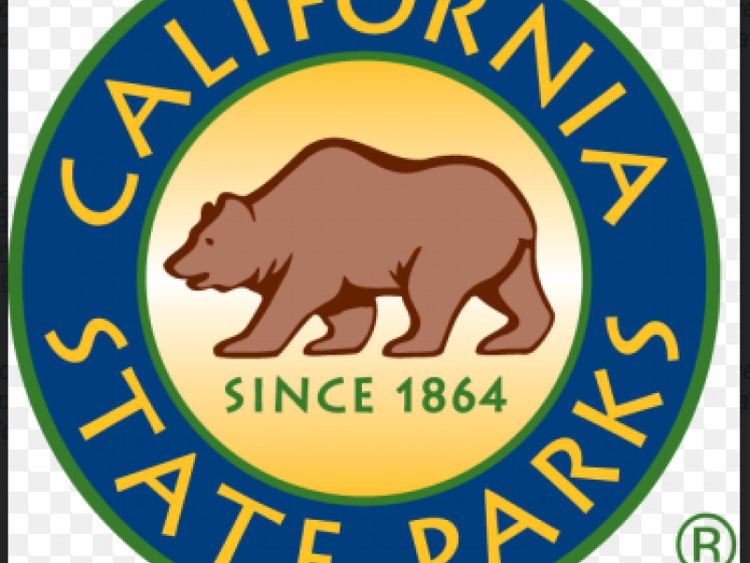
Pre-bureaucratic history
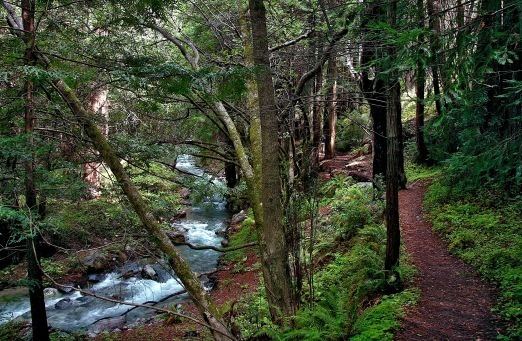
California's first state park was the Yosemite Grant, which today constitutes part of Yosemite National Park. In 1864, the federal government set aside Yosemite Valley for preservation and ceded the land to the state, which managed the famous glacial valley until 1906.
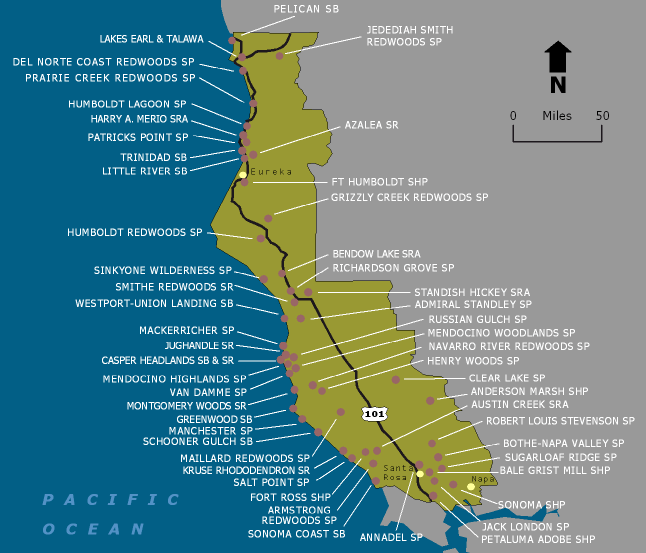
California's oldest state park, Big Basin Redwoods State Park, was founded in 1902. Until 1921, each park was managed by an independent commission or agency.
Bureaucratic history
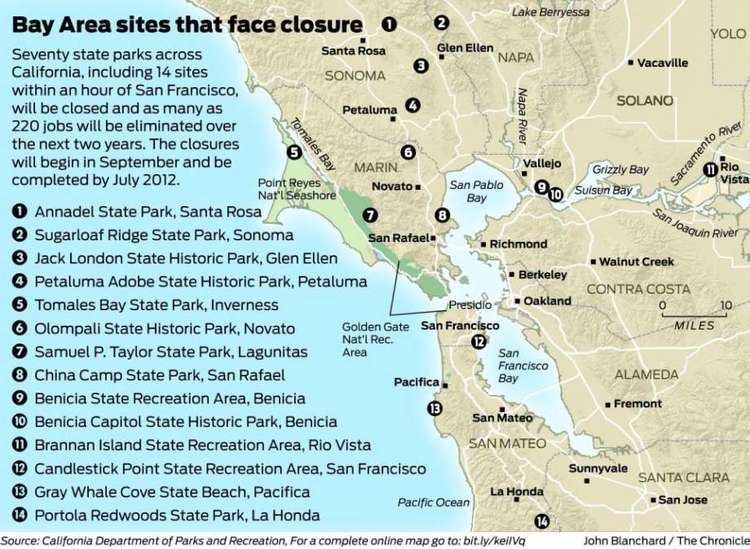
In 1927, the California Legislature, with the support of Governor C. C. Young, established the State Park Commission, and its original membership included: Major Frederick R. Burnham, W. F. Chandler, William E. Colby (Secretary), Henry W. O'Melveny, and Dr. Ray Lyman Wilbur. The following year, a newly established State Park Commission began gathering support for the first state park bond issue. Its efforts were rewarded in 1928 when Californians voted nearly three-to-one in favor of a $6 million park bond act. In addition, Frederick Law Olmsted, Jr., completed a statewide survey of potential park lands that defined basic long-range goals and provided guidance for the acquisition and development of state parks. With Newton B. Drury (later to be named director of the National Park Service) serving as acquisition officer, the new system of state parks rapidly began to grow. William Penn Mott, Jr. served as director of the agency under Governor Ronald Reagan.
Present
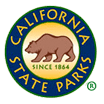
Responsible for almost one-third of California's scenic coastline (280 miles), California State Parks manages the state's finest coastal wetlands, estuaries, beaches, and dune systems. California State Parks contains the largest and most diverse natural and cultural heritage holdings of any state agency in the nation. State park units include underwater preserves, reserves, and parks; redwood, rhododendron, and wildlife reserves; state beaches, recreation areas, wilderness areas, and reservoirs; state historic parks, historic homes, Spanish era adobe buildings, including museums, visitor centers, cultural reserves, and preserves; as well as lighthouses, caverns, ghost towns, water slides, conference centers, and off-highway vehicle parks. These parks protect and preserve an unparalleled collection of culturally and environmentally sensitive structures and habitats, threatened plant and animal species, ancient Native American sites, historic structures and artifacts. The Department employs State Park Peace Officers Law Enforcement to protect and preserve the State Parks and the millions of people who visit them each year. Parks are patrolled by sworn State Park Peace Officers, of which there are two classifications, State Park Ranger and State Park Lifeguards.
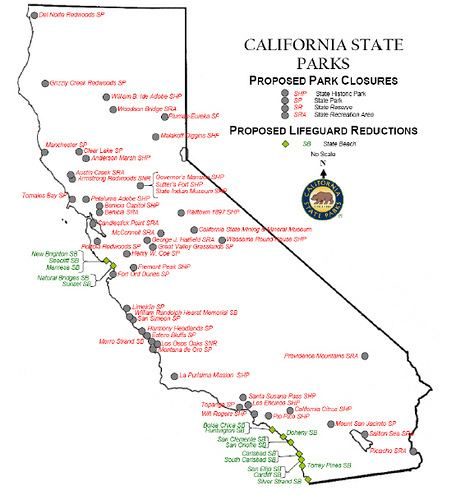
In May 2008 The National Trust for Historic Preservation listed the park system as a whole on their list of America's Most Endangered Places.
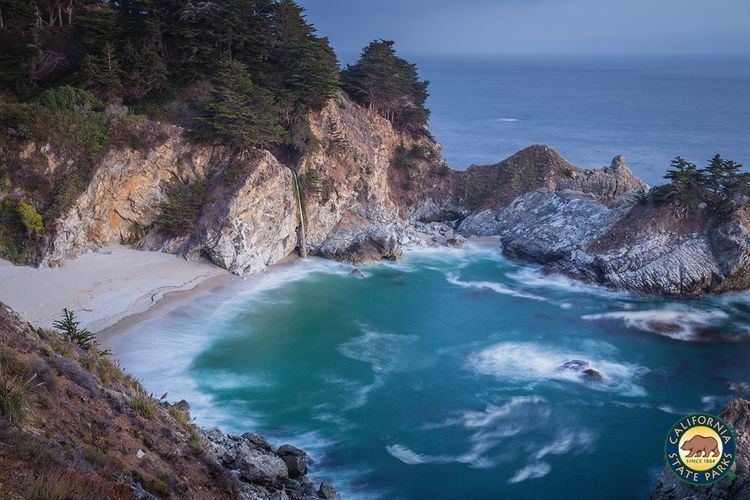
The Parks Forward commission issued a report in 2015 that noted the lack of maintenance for many parks along with visitors who do not reflect the diversity of California's population. The report also said the agency is using outdated technology for managing the parks and providing reservations while being overwhelmed by the responsibility for managing the park system. The commission was formed after the California Legislature called for the formation of a multidisciplinary advisory council to conduct an independent assessment and make recommendations.
Proposed closures
On January 10, 2008 Governor Schwarzenegger's office announced that the California State Park System will consider indefinite closures of all or part of 48 specific individual parks (one in five) to help meet the challenges of the looming (projected) $14.5 billion deficit facing California for its 2008-2009 budget year. At least $1 million of more than $14 million in total proposed cuts resulting from park closures would take place during the current budget year. The deficit reducing measure would also reduce or eliminate over 100 staff positions in addition to seasonal lifeguards at many state beaches.
On May 29, 2009, the State of California announced that it planned to close 220 parks, leaving 59 parks open.
On September 25, 2009, Governor Schwarzenegger's office announced that all state parks would remain open during the 2009-2010 fiscal year using one-time budget reduction methods in maintenance, equipment and services. Examples of service reductions included some parks only being open on weekends and holidays, or closing accessibility to portions of an otherwise open park.
On May 11, 2011, state park officials announced that seventy parks would be closed due to department budget cuts in response to California's continuing budget crises.
Controversies
Vacation buy-out On July 15, 2012 the Sacramento Bee newspaper reported that the Deputy Director of Administration at California State Parks had orchestrated $271,000 in vacation buy-outs for himself and 55 other administrative employees. A vacation buy out allows one to be paid today for vacation time that would otherwise be used in the future or cashed-out at retirement. While vacation buy-outs are allowed, these buy-outs were reported to have been done secretly.
Hidden funds Following the vacation buy-out scandal of 2012, the department revealed that two accounts were discovered totaling $54 million that had been hidden for 12 years. One fund was for the Off Highway Vehicle division and one for the state park division. This scandal resulted in the immediate resignation of the director and firing of the acting chief deputy director.
